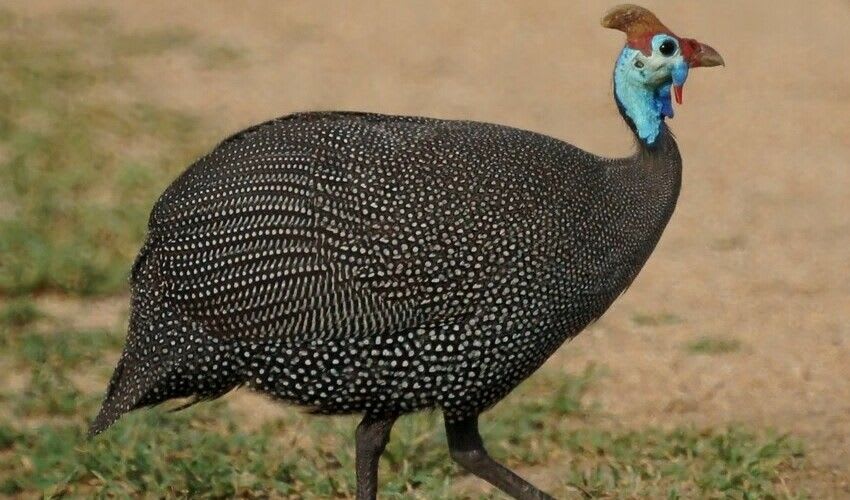Numididae – Guineafowls
Highly vocal birds domesticated for food and serve as watchdogs on farms, build nests on the ground but roost in trees at night
These birds are often noted for their bare heads and necks, dark grey or black bodies dotted with white spots, and their ability to adapt to a variety of environments, from the dense rainforests to the open savannahs of Sub-Saharan Africa.
Physically, guineafowls can be likened to partridges or large chickens in size and shape, having a somewhat pear-shaped body which aids in their agility and speed on the ground. Their size can vary considerably, with lengths ranging from 40 to 71 centimeters (17 to 28 inches). Guineafowls are known for their ability to run swiftly, which is their primary means of evading predators, rather than taking flight, which they do only as a last resort.
Guineafowls lead a predominantly sedentary lifestyle, with most species showing a preference for walking or running as they forage for food. Their diet is quite varied and includes a wide range of insects, such as ticks, scorpions, locusts, and flies, as well as seeds and fruits. Their feeding habits make them valuable in natural pest control, and farmers in agricultural areas often welcome them for their ability to reduce insect populations.
During the breeding season, guineafowls form pairs, and their courtship involves loud calling and ritualistic displays. They nest on the ground, typically in hidden locations to avoid the attention of predators. The female lays a clutch of eggs which both parents may help incubate.
One of the most striking members of the Numididae family is the Vulturine Guineafowl, known for its vivid blue and black plumage and the long feathers around its neck, resembling a vulture’s ruff. This species is the largest and most colorful of the guineafowls and is particularly resilient, able to survive without water for extended periods due to its efficient metabolism and the moisture it obtains from its food.
Genera in this family
Its striking blue skin, coupled with its long, bare neck, gives it an uncanny resemblance to a vulture, hence its name
Native to Africa, it is the best-known bird of its family, broadly introduced as domesticated species
One of the most charming sights—and sounds—of Africa’s woodlands




